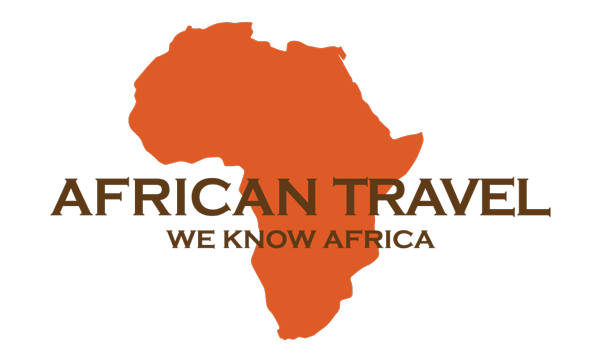SAFARI BLOG
Xigera Safari Lodge
Xigera Safari Lodge: Where Art, Wildlife, and Sustainability Unite in Botswana’s Okavango Delta
Tucked deep within Botswana’s pristine Moremi Game Reserve, Xigera Safari Lodge is more than a luxury retreat—it’s a living gallery, a conservation triumph, and an immersive safari experience that awakens all the senses.
A Remarkable Setting in the Okavango Delta
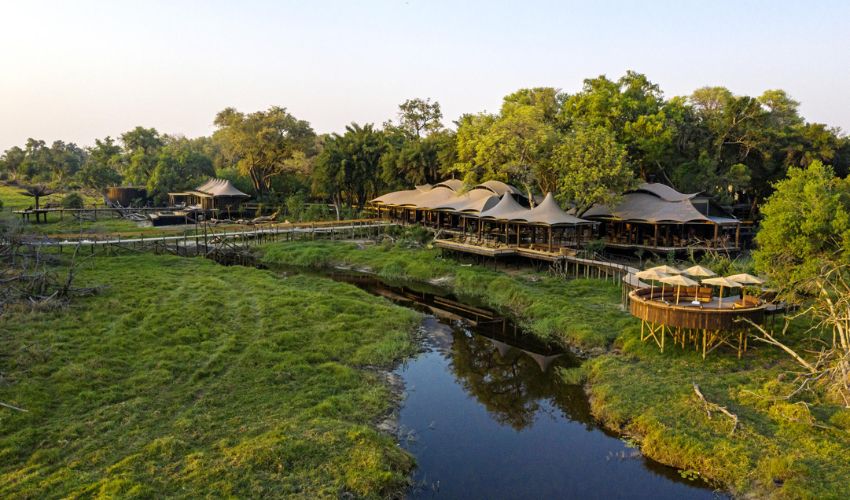
Located on the western fringes of the Okavango Delta, a UNESCO World Heritage Site, Xigera offers front-row access to one of the world’s most extraordinary ecosystems. Here, floodplains, channels, and woodlands converge to create a haven for wildlife.
Fed by Angola’s floodwaters during the dry season, the Delta transforms into a vibrant oasis each year. While the surrounding Kalahari remains dry, the Delta becomes a magnet for elephants, lions, leopards, antelope, and hundreds of bird species.
Moremi Game Reserve, where Xigera is located, is known for its biodiversity and low visitor numbers. It’s a key destination for those looking to see wildlife in a pristine, uncrowded setting. Sightings of rare birds, wild dogs, and even the elusive sitatunga antelope are possible here.
A Legacy Reimagined
For the Tollman family, founders of The Red Carnation Hotel Collection, Moremi has long held personal meaning. They came here for over two decades to disconnect and reconnect with Africa—well before envisioning a lodge of their own.
When the small camp they had cherished came up for sale, they saw the opportunity to create something lasting: not just a lodge, but a legacy. One that reflects their deep bond with the Delta and their passion for African hospitality.
They named it Xigera (pronounced kee-jera), after the pied kingfisher known for hovering gracefully above the water. Like its namesake, the lodge is rooted in place yet alive with energy, creativity, and care.
Design That Tells a Story
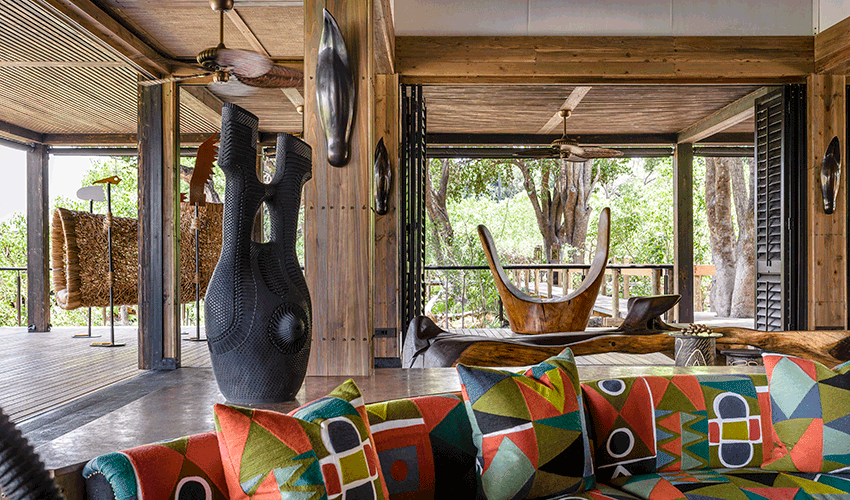
Xigera is a design lover’s dream, but it doesn’t feel staged or out of place. Every element—from sculptural furniture to hand-carved doors—was made by African artists. The vision was to create a living gallery that celebrates African talent in an immersive space, not one curated from afar. The main lodge houses over 100 bespoke pieces commissioned from some of Africa’s finest artists and artisans.
Each of the 12 suites feels personal, layered, and distinct. You’ll find bronze and timber details, custom ceramics, woven textures, and views that open straight onto the floodplains. The art isn’t just decoration—it invites conversation and brings the stories of the artists into the space.
One standout is the Baobab Treehouse, Available for an unforgettable overnight stay, a striking steel structure inspired by a Jacobus Pierneef painting of a solitary baobab tree. Tucked among Croton trees and rising nearly 10 meters above the floodplain, it offers panoramic views across three levels, including an open-air bathroom reached by a sculptural staircase winding through the ‘trunk.’
Where Wildlife and Wilderness Reign
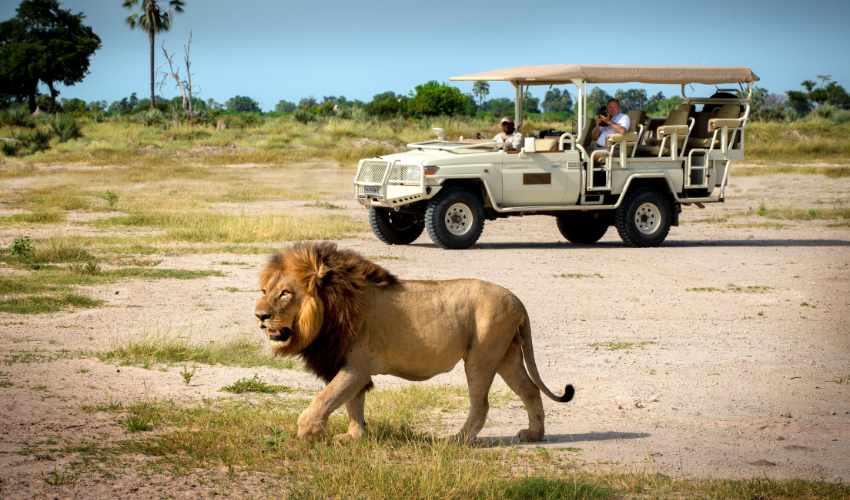
Xigera’s location ensures iconic wildlife encounters—lion prides, leopards, wild dogs, and large herds of red lechwe. The birdlife is spectacular, and silent mokoro excursions offer close-up views of kingfishers, jacanas, and bee-eaters. Whether on foot, by boat, or vehicle, every outing is tailored and intimate.
Surrounded by water for much of the year, the lodge allows for a slower, more immersive safari. Elephants often pass by the decks, and during construction, a leopard famously gave birth and raised her cubs beside one of the suites while the lodge was under construction.
Transformational Experiences: From Mokoros to Massage
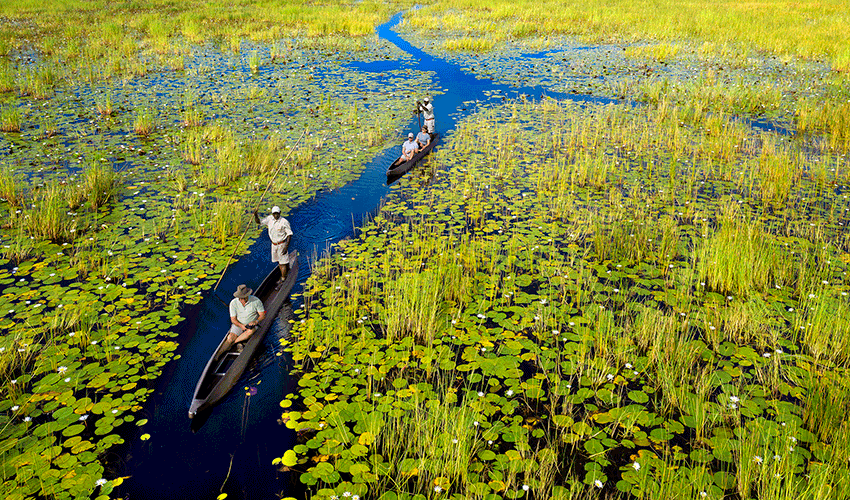
At Xigera, every detail is crafted to inspire. Drift through floodplains in a glass-bottom mokoro. Share stories fireside beneath starlit skies. Unwind in the spa with treatments using organic, locally sourced botanicals. For a truly unique experience, sleep under the stars in the Baobab Treehouse, surrounded by the sounds of the Delta and the untamed wilderness beyond.
Other special touches include a floating meditation deck, yoga sessions with panoramic views, and chef-led tastings of seasonal dishes made from locally grown ingredients. Every experience honors both nature and human connection.
An Environmental Marvel in the Heart of the Delta

Xigera is a model of sustainability. Entirely solar-powered, it was built without felling a single tree. Water is filtered and recycled, and the supply chain emphasizes local sourcing—from food to linens to bath products.
More than green technology, Xigera’s ethos is rooted in stewardship and regeneration. Suites are raised to protect the land. Architecture flows with the curves of the Delta. Interiors reflect the natural tones and textures of the surrounding landscape. It’s luxury with purpose—beauty aligned with responsibility.
Xigera Safari Lodge isn’t just a place to stay—it’s a place to feel
Here, art, wildlife, and sustainability converge to offer something rare: a soulful, forward-thinking safari experience grounded in reverence for Africa and expressed through bold, creative spirit.
A visit to Xigera is transformative and unforgettable. You can pair it with other remarkable destinations and camps across Botswana—our Platinum Botswana itinerary is just one inspiring example. Or consider combining it with time in Cape Town, a safari in Greater Kruger, or even a stop at Victoria Falls. The options are endless. Ready to start planning your Xigera safari? Our experts will craft a journey perfectly aligned with your vision and preferences.
Safari in Sabi Sand Reserve, South Africa
Why Sabi Sand Reserve Is South Africa’s Ultimate Private Safari Experience
When it comes to luxury safaris, few places match the reputation of Sabi Sand Game Reserve—a name synonymous with exclusivity, exceptional big cat sightings, and some of the finest safari lodges in Africa. Bordering the western edge of Kruger National Park, Sabi Sand offers access to the same prolific wildlife—but without the crowds—thanks to its private, carefully protected setting.
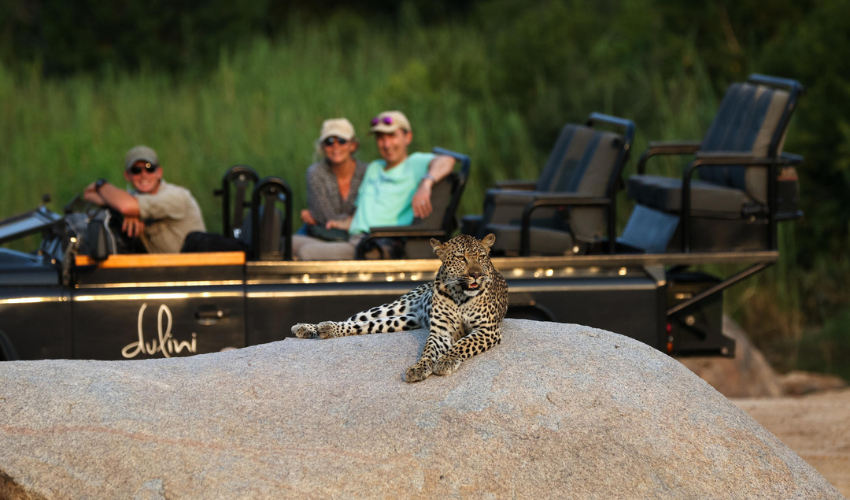
A Reserve of Reserves
Covering approximately 65,000 hectares (160,000 acres), Sabi Sand is not a single reserve but rather a collection of around 20 privately owned game reserves, each operating its own lodges and traversing areas. These reserves are unfenced from one another and share an open boundary with Kruger National Park, allowing animals to roam freely across this vast wilderness. This seamless integration means you get all the wildlife of Kruger—with far fewer people and vehicles.
Here are just a few of our favorite luxury reserves that make up the Sabi Sand mosaic:
-
Sabi Sabi Private Game Reserve – Known for its diverse ecosystems and four distinct luxury lodges (Bush Lodge, Little Bush Camp, Selati Camp, and Earth Lodge), this reserve blends tradition with modern design and conservation-focused hospitality.
-
Singita Sabi Sand – A prestigious 45,000-acre concession home to Ebony Lodge and Boulders Lodge, where bold architecture meets exceptional service, wine cellars, and riverfront suites.
-
Ulusaba Private Game Reserve – Owned by Sir Richard Branson, this reserve features Rock Lodge and Safari Lodge, offering panoramic views from a hilltop and stylish bush experiences below.
-
Dulini Private Game Reserve – A trio of intimate lodges (Dulini Moya, Dulini River, and Dulini Leadwood) famed for their understated elegance, warm hospitality, and expert tracking teams.
-
Londolozi Game Reserve – A pioneer in South African eco-tourism and leopard conservation, Londolozi features five camps, including Tree Camp and Granite Suites, and has remained family-run for over 90 years.
-
Lion Sands Game Reserve – Straddling both Sabi Sand and Kruger, Lion Sands is unique in offering dual access. Its flagship Ivory Lodge and River Lodge promise indulgent suites and riverside game viewing.
-
Cheetah Plains – An exclusive-use villa concept known for ultra-modern architecture, private chefs, and electric safari vehicles—ideal for families or groups seeking complete seclusion.
Each reserve operates with strict traversing rights, meaning the roads and sightings are limited to guests staying within that specific reserve, preserving the sense of exclusivity, space, and intimacy that defines Sabi Sand.
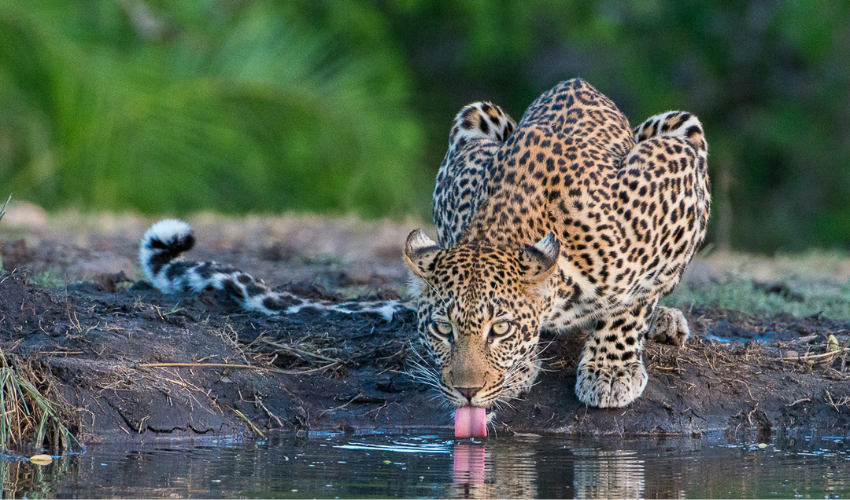
The Leopard Capital of Africa
Sabi Sand is arguably Africa’s premier destination for leopard sightings. Thanks to decades of responsible tourism and careful habituation, the leopards here are not only abundant but remarkably relaxed around vehicles. Guests can witness these elusive cats up close and unhurried, sometimes for long stretches as they lounge in trees, stalk through the bush, or tend to their cubs.
In most other parts of Africa, even catching a glimpse of a leopard can be considered a lucky break. But in Sabi Sand, daily sightings are common—making it a favorite among wildlife photographers and big cat enthusiasts.
What Makes Private Reserves So Special?
While Kruger National Park is one of the most iconic safari destinations on the continent, private reserves like those within Sabi Sand offer a suite of exclusive advantages that elevate the experience:
-
Off-Road Game Viewing – Unlike in national parks, guides in Sabi Sand can leave the road to track wildlife, allowing for closer, more flexible encounters.
-
Night Drives – After-dark safaris with a spotlight provide the rare chance to observe nocturnal predators, from lions on the hunt to porcupines and bush babies.
-
Strict Sightings Management – Only a limited number of vehicles are allowed at any animal sighting, ensuring unobstructed views and minimal disturbance.
-
Expert Guiding and Tracking – Guests benefit from highly trained rangers and Shangaan trackers, who offer insights into animal behavior and ecology far beyond the basics.
-
Restricted Access – Unlike public parks, access to each reserve is limited to paying guests, guaranteeing privacy and tranquility on every drive.
-
World-Class Lodging – Expect everything from plunge pools with a view of the bush, to spa treatments, wine cellars with curated wine lists, unique sleep-out experiences and candlelit dinners under the stars.
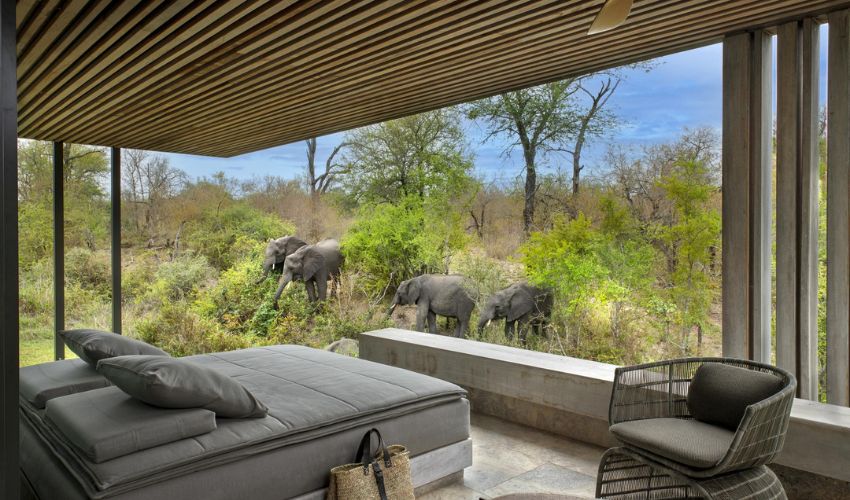
Ready to begin your journey to Sabi Sand?
Sabi Sand isn’t just a destination—it’s a benchmark for what safari should be: intimate, thrilling, and utterly indulgent.
Every lodge has its own personality—some are modern and sculptural, others earthy and romantic—but all are deeply connected to their environment and designed to immerse you in the magic of safari.
A stay at one of Sabi Sand’s premier lodges is an unforgettable experience—an iconic blend of untamed wilderness and elevated comfort. This region pairs effortlessly with Cape Town’s coastal charm and the dramatic beauty of Victoria Falls. With excellent flight connections, it’s an effortless way to experience Southern Africa’s most iconic highlights. Explore our Southern Explorer itinerary for inspiration—then let our safari specialists help you tailor the perfect Sabi Sand adventure for you.
My First Visit to South Africa
First-Time South Africa Safari: What to Expect
My first trip to South Africa was unforgettable, offering a rich blend of nature, history, culture, food, and wine. Traveling with a group of fellow travel professionals made it even more special, as we shared incredible moments — from exploring the many corners of Cape Town to enjoying an incredible safari in a private Kruger reserve. While it wasn’t my first African safari, it was everyone’s first visit to South Africa — making the experience even more exciting and meaningful.

Exploring Cape Town
Our journey began in Cape Town, a city rich in culture, natural beauty, and history. We stayed at the Cape Cadogan Hotel, an elegant boutique hotel on the corner of Kloof Street, one of Cape Town's most vibrant and stylish neighborhoods. The area is teeming with trendy restaurants, bars, and cafés—perfect for exploring the city’s culinary scene and nightlife. The hotel served an à la carte breakfast each morning, which we all looked forward to, and our dinner at Cape Cadogan was one of the best meals of the trip. The creative dishes were designed for sharing and were incredibly tasty—who knew smoked cabbage could taste so good?
We visited the famous Victoria & Alfred Waterfront, a lively spot with stunning views of Table Mountain. We strolled along the waterfront, indulged in fine dining, and shopped for souvenirs while soaking in the picturesque setting.
We also took a boat tour to Robben Island, where Nelson Mandela was imprisoned for 18 years. The tour was led by a former prisoner, which made the experience even more personal and unforgettable. He shared powerful stories about his time on the island and the fight for equality and democracy in South Africa. It was a humbling experience that deepened our understanding of the country’s history and resilience.
That evening, we dined at GOLD Restaurant, which offered a culinary safari featuring a 14-course tasting menu inspired by different African cuisines. The meal was accompanied by cultural performances, and everyone at the restaurant participated in a lively drumming session.

Cape Peninsula and Table Mountain
Our Cape Peninsula tour was a spectacular highlight. The dramatic cliffs and sparkling blue waters created a breathtaking coastline. We visited the Cape of Good Hope, a stunning rock outcrop often mistaken for the southernmost point of South Africa. Just a few minutes away is Cape Point with more incredible views from the lighthouse and lookout points. After lunch at Simon's Town, we visited Boulders Beach to see the colony of African penguins. Watching these adorable creatures waddling along the sand brought so much joy to our entire group.
Later that day, we took advantage of the clear afternoon skies to visit Table Mountain. It had been foggy in the morning, but by the afternoon, the weather was perfect—crystal clear with no wind. The views from the top were absolutely breathtaking, offering panoramic vistas of Cape Town, the ocean, and the surrounding mountains. The sunset cast a golden glow over the city, making the experience even more magical.

Winelands Adventure
Another day of adventure took us to the breathtaking Cape Winelands, about 90 minutes from Cape Town. The region’s rolling vineyards and charming towns created the perfect setting for relaxation and indulgence. We explored Franschhoek, sampled wines at two popular wineries, and enjoyed a delicious al fresco lunch. At Rickety Bridge Winery, we even tried our hand at wine blending—the results were mixed, but everybody had a good time.

Arriving at Kruger Private Reserve
After exploring Cape Town, we flew to Skukuza Airport in the Greater Kruger area, where our guides from Tinga Lodge met us. Located in the Lion Sands Private Game Reserve, Tinga is just a few minutes from the airport and perfectly positioned on the banks of the Sabie River. From the lodge, we enjoyed stunning views of elephants, hippos, and other wildlife gathering to drink or cool off. Being in a private reserve within Kruger allowed us to experience intimate safari drives without the crowds of the national park. We also enjoyed extended evening game drives with picturesque sundowners and had the opportunity to explore off-road for closer wildlife encounters.
The accommodations were spacious and elegantly designed, with each room featuring a private plunge pool overlooking the river—a perfect spot to unwind after a game drive. The dining was exceptional, with all meals and drinks included. The complimentary laundry service was a thoughtful touch, especially after a few warm days on safari.

Safari Adventure in Kruger
Our days began early with a quick coffee and pastries before heading out for a game drive around 5:30 AM. The African sunrise over the savannah was magical. We were led by Dre, our expert guide, and Wanted, our tracker, who were always on the lookout for wildlife. Their skill and knowledge made every drive exciting and full of surprises.
We saw lions, giraffes, leopards, elephants, baboons, kudus, impalas, zebras, and even an elusive leopard. The chance to see these majestic creatures up close in their natural habitat was truly amazing. Along the way, we stopped for a coffee break in the bush and to stretch our legs.

After the morning drive, we returned to the lodge for a hearty breakfast and some downtime. The lodge’s pool and spa were the perfect place to unwind between drives. The spa treatments left us feeling rejuvenated, and we enjoyed the outdoor spaces, watching for wildlife from our lounge chairs.
In the afternoon, we set off for another game drive, ending with a sundowner—watching the sun dip below the horizon while sipping on cocktails. One evening, we had an exhilarating encounter with a white rhino by the river. As the rhino approached, we had to back away for safety, but our luck held—we saw the same rhino the next day, walking right by the road. It was an unforgettable moment.

A Perfect First Trip to Africa
South Africa is a land of striking contrasts, where vibrant cities meet breathtaking wilderness, and every moment is filled with excitement and discovery. It's no surprise that it's the top choice for first-time safari-goers, offering a mix of incredible experiences in some of the most luxurious settings. Our South African adventure was a dream come true for everyone in our group, leaving us with memories we'll cherish forever.
Ready for your first South African adventure? Browse our selection of suggested South Africa Itineraries for inspiration. Reach out to us to create your dream journey.
